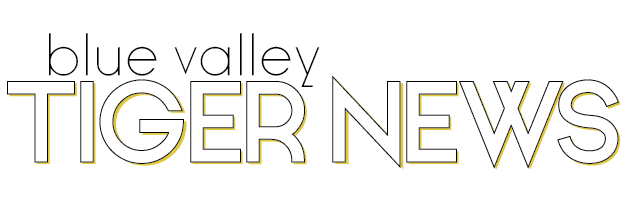In the early, cool morning, just before sun begins to stretch rays of light across the sky, Junior David Coventry boards a plane for a quick ride.
But he isn’t a passenger.
He’s the pilot.
Coventry said he became fascinated with planes at a very young age.
“I grew an obsession with [airplanes] from the summers that I flew to france,” he said. “From the age of three, I started to collect model planes, posters, books, anything I could to expand my knowledge on them.”
Coventry said he took lessons at the Johnson County Executive Airport after researching about the program.
“My dad researched it and talked to [flight instructor Matt Miller] and choose him,” he said. “It was for my birthday. It was a surprise kinda deal.”
Generally flying around the Stilwell area, Coventry said he has learned the essentials to flying.
“The type of flying I’ve done so far is fairly basic, general training,” he said. “[I] basically practic[e] turns, level flight, the “slip” maneuver, etc. Once I get more hours in I will probably fly further out and for longer distances.”
Coventry said his favorite type of flight is the “slip” maneuver. “I like it because it feels like you’re falling.”
Coventry said he would like to continue flying in the future, whether it may be for a job or a pastime.
“I want to become an aerospace engineer with a pilot’s license so that I would be able to fly the plane I designed,” he said. “So probably mostly hobby/recreational flying, but a commercial [or] private pilot is always an option.”
Although there are not requirements when learning to fly, Coventry said it’s beneficial to have some sequential background knowledge.
“It definitely helps to be good at math/science [and to] understand exactly what is going on at a fundamental level, but I would definitely say its not a requirement,” he said. “As far as becoming an Aerospace engineer, math and science is an absolute necessity.”
Coventry said he hasn’t received his licence yet because of school and sports, but said he must get hours in both ground training and flying time before he can do anything.
“There is also VFR [visual flight training] and IFR [instrument flight training] that is built into the amount of flying time you need,” he said. “If I remember right, its somewhere around 40 hours of flight time before you can get the license, but most people get more before applying so they have a better chance of passing the exam.”
Coventry said he hopes to acquire his license by the end of his senior year.
“I think it would be really cool to say I can fly before I graduate,” he said.
Coventry said he favorite part about flying is that it is an ultimate stress reliever.
“Once you are in the air, you basically forget everything that had been on your mind, and you become focused on flying.”
But he isn’t a passenger.
He’s the pilot.
Coventry said he became fascinated with planes at a very young age.
“I grew an obsession with [airplanes] from the summers that I flew to france,” he said. “From the age of three, I started to collect model planes, posters, books, anything I could to expand my knowledge on them.”
Coventry said he took lessons at the Johnson County Executive Airport after researching about the program.
“My dad researched it and talked to [flight instructor Matt Miller] and choose him,” he said. “It was for my birthday. It was a surprise kinda deal.”
Generally flying around the Stilwell area, Coventry said he has learned the essentials to flying.
“The type of flying I’ve done so far is fairly basic, general training,” he said. “[I] basically practic[e] turns, level flight, the “slip” maneuver, etc. Once I get more hours in I will probably fly further out and for longer distances.”
Coventry said his favorite type of flight is the “slip” maneuver. “I like it because it feels like you’re falling.”
Coventry said he would like to continue flying in the future, whether it may be for a job or a pastime.
“I want to become an aerospace engineer with a pilot’s license so that I would be able to fly the plane I designed,” he said. “So probably mostly hobby/recreational flying, but a commercial [or] private pilot is always an option.”
Although there are not requirements when learning to fly, Coventry said it’s beneficial to have some sequential background knowledge.
“It definitely helps to be good at math/science [and to] understand exactly what is going on at a fundamental level, but I would definitely say its not a requirement,” he said. “As far as becoming an Aerospace engineer, math and science is an absolute necessity.”
Coventry said he hasn’t received his licence yet because of school and sports, but said he must get hours in both ground training and flying time before he can do anything.
“There is also VFR [visual flight training] and IFR [instrument flight training] that is built into the amount of flying time you need,” he said. “If I remember right, its somewhere around 40 hours of flight time before you can get the license, but most people get more before applying so they have a better chance of passing the exam.”
Coventry said he hopes to acquire his license by the end of his senior year.
“I think it would be really cool to say I can fly before I graduate,” he said.
Coventry said he favorite part about flying is that it is an ultimate stress reliever.
“Once you are in the air, you basically forget everything that had been on your mind, and you become focused on flying.”
Photos submitted by David Coventry





